#stavros niarchos
Explore tagged Tumblr posts
Text

May 30, 2023 — Camille reshared on her story!
#camille rowe#camille rowe pourcheresse#fingermonkey#camille rowe bel#ig story#theo niarchos#colby mugrabi#bianca brandolini#eugenie niarchos#stavros niarchos#dasha zhukova#may 2023#2023
2 notes
·
View notes
Text

SNFCC Athens ❤️
#tumblr#amazing#tumblrpost#loveit#tumblrgirl#lovely#greek tumblr#greek#athens#culture#foundation#capture#sunset#moment#stavros niarchos
5 notes
·
View notes
Photo
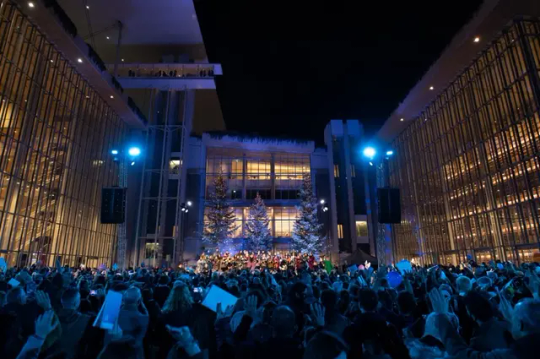
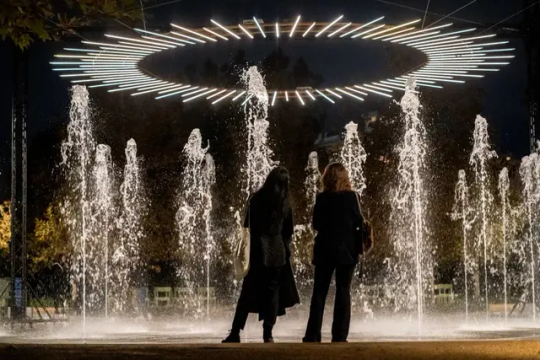
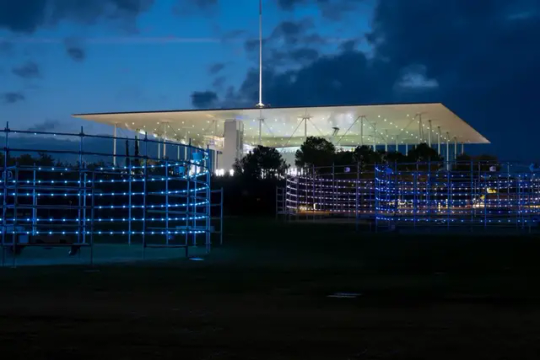

Stavros Niarchos Foundation Cultural Center (SNFCC) in Athens during the Christmas holidays.
Source
#greece#europe#travel#wanderlust#festivities#holidays#christmas#christmas lights#light decorations#outerior#sterea hellas#central greece#stavros niarchos foundation cultural center#athens#attica#mainland
71 notes
·
View notes
Text

library design is my passion
26 notes
·
View notes
Text
For half a millennium until the Holocaust, the cosmopolitan city of Thessaloniki, Greece, had a unique claim to fame: it was Europe’s only major city with a Jewish majority.
But the golden age of Thessaloniki’s mostly Sephardic Ladino-speaking Jewish community came to a sudden end with the Nazi occupation of Greece in 1941 and turned cataclysmic with the deportation two years later to Auschwitz of nearly all the city’s Jews. By the end of World War II, some 65,000 Greek Jews — 87% of the total and 96% of those from Thessaloniki — had been killed, leaving barely 2,000 survivors in Thessaloniki (also known as Salonika).
Among them were the parents of Dr. Albert Bourla, a veterinarian who would go on to become the chairman and CEO of Pfizer, one of the world’s largest pharmaceutical companies.
In 2022, Bourla won the Genesis Prize — often described as the Jewish Nobel — for having led the development of Pfizer’s COVID-19 vaccine. Stan Polovets, co-founder and chairman of the Genesis Prize Foundation, said in announcing the reward, “Millions of people are alive and healthy because of what Dr. Bourla and his team at Pfizer have accomplished.”
Now, with global antisemitism at its worst levels since World War II, Bourla is about to realize another milestone: the long-awaited opening of a Holocaust Museum of Greece.
Bourla donated the $1 million Genesis Prize money toward construction of the museum. The museum is also being funded by the Stavros Niarchos Foundation, and the governments of Greece and Germany. The management of the museum is currently trying to raise an additional $10 million.
“Those who know me know that in addition to being very proud of my Jewish heritage, I am equally proud of being Greek,” Bourla said in an emotional June 2022 speech in Jerusalem accepting the Genesis Prize. “My mother’s courage and optimism came from her experience of narrowly escaping death at the hands of the Nazis. In fact, both of my parents turned their experience surviving the Holocaust into something positive and life-affirming. This clearly shaped my worldview.”
The 9,000-square-foot museum occupying eight floors in an octagon-shaped structure will be located at the site of Thessaloniki’s Old Railway Station, where the first Nazi train carrying Jews to Auschwitz departed on March 15, 1943.
But the museum, slated to open in 2026, won’t be just about the tragedy of the Holocaust. Exhibits and artifacts will tell the story of more than 2,300 years of Greek Jewish history in Thessaloniki and 38 other communities, beginning with the ancient Romaniote Jews who settled in Greece during the reign of Alexander the Great.
At an Oct. 29 groundbreaking ceremony in Thessaloniki, Polovets was joined by German President Frank-Walter Steinmeier, Greek President Katerina Sakellaropoulou, and local dignitaries and Holocaust survivors.
“I was honored to participate and was moved by the ceremony, during which President Steinmeier said he ‘felt shame’ and that the memory of what was done to the Jewish people on this site ‘cannot be erased.’ That is why this museum is so important,” Polovets said. “The memory of this once-vibrant Greek Jewish community and its near destruction by the Nazis — especially during the current wave of rising global antisemitism — must never be erased.”
Only about 5,000 Jews remain in Greece: About 4,000 live in Athens, and the remainder live in Thessaloniki, Ioannina, Rhodes, Corfu and other communities. Meanwhile, Greece has not been immune to the wave of antisemitism sweeping Europe. Vandalism of Jewish cemeteries and Holocaust memorials is fairly commonplace.
A 2014 global survey of antisemitism by the Anti-Defamation League found that 69% of Greeks harbor antisemitic views — the highest percentage of any country in the world outside the Middle East. While those findings are sometimes disputed, Greece continues to struggle with antisemitism.
However, physical violence against Greek Jews is extremely rare, and the current Greek government, as well as the one that preceded it, are considered among the most pro-Israel in Europe. Greece observes International Holocaust Remembrance Day, and in 2014 the parliament outlawed Holocaust denial.
A big push for the Holocaust museum came from Thessaloniki’s former mayor, 82-year-old Yiannis Boutaris, who died on Nov. 4, less than a week after the Holocaust museum’s groundbreaking ceremony. Boutaris announced that his city would build the museum at a 2017 event attended by Israeli Prime Minister Benjamin Netanyahu and other dignitaries.
“It will symbolize our shame,” Boutaris said at the time, “for what happened, for what we did, and mostly for what we could not or did not wish to do… during and after the war.”
In addition to Bourla, other famous Jews with roots in Thessaloniki include actor Hank Azaria, Israeli businessman and philanthropist Leon Recanati, his sister the philanthropist Jude Recanati, actress Lea Michele, former Nevada congresswoman Shelley Berkley and Belgian-born American fashion designer Diane von Fürstenberg.
Polovets said Bourla’s donation aligns with the Genesis Prize Foundation’s values and mission of inspiring Jewish pride.
“With the rise of global antisemitism, education will be at the center of the museum’s activities, hosting permanent and temporary exhibitions and archives that will highlight the value of preserving the remembrance of the Holocaust, acceptance and respect for diversity, human rights, and freedom,” he said.
Polovets said he hopes the museum will inspire visitors to fight hatred from spreading today.
“Hatred in any form leads to denial, disrespect and destruction,” he said. “Democracy and respect for others are values that can never be taken for granted, and each of us has a responsibility to stand up to all forms of hatred.”
96 notes
·
View notes
Text
What's with bharani and scorpios having beef but also crazy obsession with each other??

Prime example of this is the YEARS long beef between Lindsay Lohan (bharani moon) and Paris Hilton (jyestha lagna), which began when Lindsay allegedly became romantically connected to Paris' ex-bf, Stavros Niarchos III.

In the film Death Becomes Her (1992) a similar story plays out. Madeline Ashton is played by Meryl Streep (bharani moon) and Helen Sharp played by Goldie Hawn (anuradha sun). Meryl's character seduces Goldie's character's husband, leading to an endless feud between the two.


What's even more interesting is that an uttara bhadrapada man is at the center of this feud in both examples. Stavros (Paris' ex) can have uttara bhadrapada or purva phadrapada moon, while Ernest Menville (the man that is fought over by the women in Death Becomes Her) is played by Bruce Willis who has uttara bhadrapada sun...
☆彡
The synchronicity is real...
81 notes
·
View notes
Note
Hi Neil:
*Think* I’m up to date with your Tumblr / Bluesky answers, sorry if I missed this, but how did the interview of Dr. Jenni Haukio and Eliza Reid – the First Ladies of Finland and Iceland - on Wednesday, Sept. 20th at NYPL come together?
Hope people can attend or listen to the stream: it sounds fascinating.
https://www.nypl.org/events/programs/2023/09/20/first-ladies-finland-and-iceland-neil-gaiman
Thanks,
Randi
P.S. If you can find out if the NYPL folks are calling the Stavros Niarchos Foundation Library (nee Mid-Manhattan Library) as SNIFFLE vs the spelled out SNFL, it’s be appreciated.
They asked.
490 notes
·
View notes
Text
youtube
Grassroot Soccer 2023 World AIDS Day Gala
On November 30, 2023, the Ninth Annual Grassroot Soccer (GRS) World AIDS Day Gala at Lindley Hall in London raised almost $2 million for GRS, which uses the power of soccer to equip young people with the life-saving information, services, and mentorship they need to live healthier lives.
Featuring celebrities and high-profile individuals from the worlds of sport, entertainment, and global health, the evening focused on the theme of mental health - the most critical health issue facing young people globally, and one that affects other urgent health challenges, including HIV/AIDS. During the evening, GRS honored the television series Ted Lasso and the Stavros Niarchos Foundation (SNF) for their respective impact on mental health with the Game-Changer Award.
Attendees included: Christen Press, Tobin Heath, Brendan Hunt, Kola Bokinni, Billy Harris, June Sarpong, Dr. Phumzile Mlambo-Ngouka, Fiona Ferguson, Ethan Zohn, and HALE ZERO, along with video appearances by David Beckham, Seth Meyers, Siya Kolisi, Phil Dunster, Nick Mohammed, and Cristo Fernandez.
19 notes
·
View notes
Text
It strikes me as one of those moments I will remember forever, so I’d better write it down (ha, ha): Finishing City of Glass in the Stavros Niarchos branch of the New York Public Library, closing the book, and realizing the man speaking calmly behind me on his cell phone is expounding, credulously, upon some antisemitic conspiracy theory involving child sex trafficking. I can’t see him — still haven’t looked at him — so all I can take in is this disembodied voice. And in that moment I feel nothing except totally compelled to listen with rapt attention to the entire thing.
17 notes
·
View notes
Text

STAVROS 2 NIARCHOS.... Canning Dock, Liverpool. #Liverpool #merseyriverfestival #blackandwhite #monochrome
2 notes
·
View notes
Text


April 3, 2023 — Camille via her story!
#camille rowe#camille rowe pourcheresse#fingermonkey#camille rowe bel#ig story#theo niarchos#stavros niarchos#april 2023#2023
3 notes
·
View notes
Text
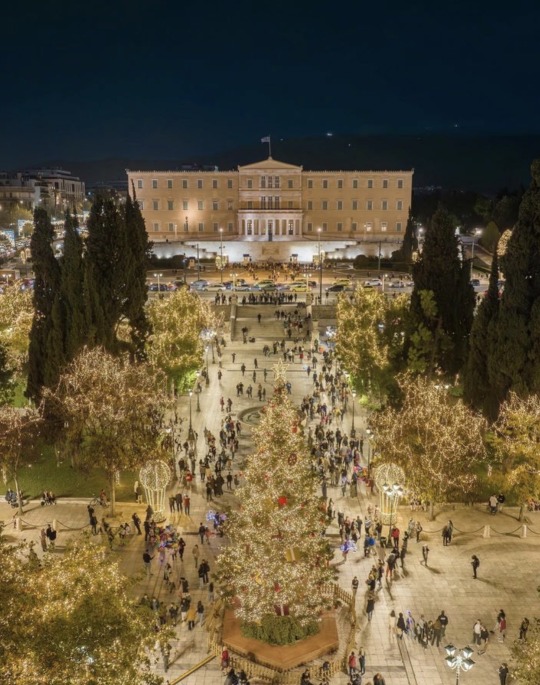
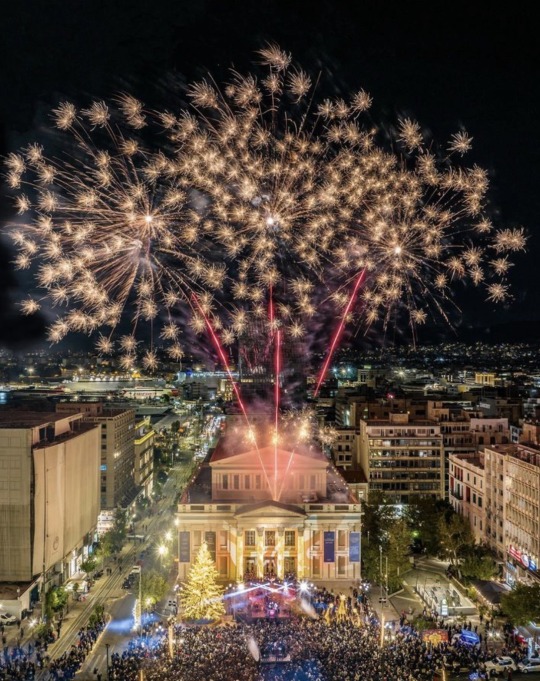



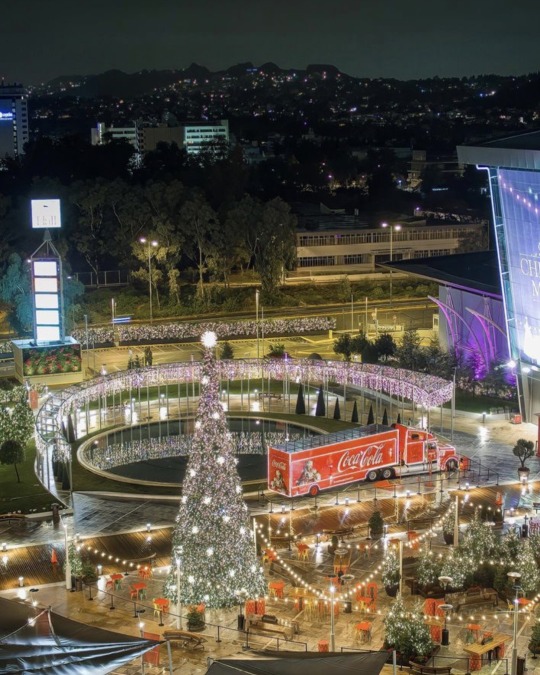

📍Athens,Greece 🇬🇷
Christmas in Athen🎄
📸@d.tzankatian
📍Syntagma Square
📍Piraeus
📍Stavros Niarchos
📍Christmas factory
📍The Ellinikon Experience
📍Golden Hall
📍Omonoia square
#lifestyle#myuploads#aesthetic#travel#travelingare#photography#winter#greece#athens#christmas#december 2023
18 notes
·
View notes
Text
hi! is there any attraction/place in Athens that you would highly recommend visiting? Maybe, hidden gems, or underrated places that are awesome? :') i apologize if this is a popular question that you get haha
Hello @dandelionesa ! You would be surprised at how little I know about Athens. I have been few times in my life there, despite being a native Greek living in the country all my life. I mean, I have lived there for a month once but I didn't explore at all beyond the neighborhood. So, I can tell you all the significant places not to miss but I lack the personal insight in little known gems.
Another thing about the blog is that if you visit from the browser, I have an option called "The Regions" which is essentially a travel guide about all main locations in Greece. It is not complete yet but the Athens one is. You can find it in: The Regions > Sterea Hellas > Attica for feature references. But, here, I am gonna screenshot the sightseeing recs mentioned there.
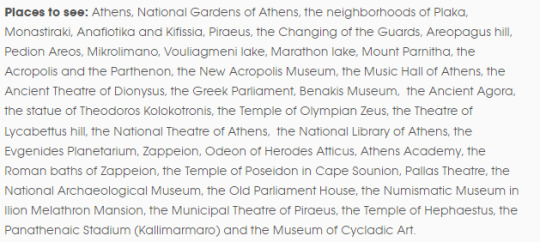
These are about Attica, the region that encompasses Athens. Most attractions are naturally inside Athens but there are some important ones like the Vouliagmeni Lake and the Temple of Poseidon that include driving / travelling outside the city.
The list is concise so I don't explain what each of these places is but they are worth visiting if you have the time. Of course, to do a proper journey of Athens, where Athens is going to be your focus, that takes time. It is a large place. Most people stay in Athens for two days before going to the main part of their vacation, usually some islands. You can't say you did Athens in two days though. Whoever says that to you, don't believe them. You can do Acropolis and like two-three museums at most in this time.
Apart from the ones above I also found some recs from other websites about hidden gems:
Philopappos Hill (that's not a hidden gem, I just forgot it in my own list lol)
Hellenic Motor Museum
Pnyx
Museum of the Basil & Elise Goulandris Foundation
Museum of Greek Folk Musical Instruments
Ilias Lalaounis Jewellery Museum
Benakis Museum of Islamic Art (NOTE: this is a different museum than the main Benakis one which I mention in the list above, if you can do both great, but if you can only do one, then the main must absolutely not be missed)
First Cemetery of Athens (yep, it's a valid rec)
National Observatory of Athens
Watch open air cinema in Thiseion. Or in the rooftop of Cine Paris.
The Greek National Opera (Ethnikí Lyrikí Skiní)
The Nautical Museum on the cruiser Averof
The Benakis (another Benakis) Toy Museum
I don't know what's wrong with me and I forgot to mention above:
Kapnikarea Church
The Metropolitan Cathedral of Athens
The UNESCO Monastery of Daphne
The New National Library (Stavros Niarchos Foundation). The one I mention in the first list is the Old National Library. Both are worth a visit for different reasons.
Go to Glyfada and along the Vouliagmeni coast for swimming (Vouliagmeni is a lake right next to the sea beach)
The Orthodox Church of Saint Dionysius of Areopagus

The Catholic Church of Saint Dionysius of Areopagus!

I was sleeping on the fact that there were two churches of those!
As you see I also added some recs for experiences i.e cinemas, theatres and so on. These are if you take your time in Athens, explore or stay for a while. Note that some might be less available in the summer, for example in summer the National Opera operates in open air performances like in the ancient Odeon of Herodes Atticus. If you stay and explore, check for concerts in theatres and stadiums. Concerts in Greece are real nice and vibey.
In retrospect, thanks for sending this ask because I realised I have a shitload of editing to do in my original list.
EDIT!!! The Byzantine and Christian Museum of Athens!!!! Srsly what's wrong with me lol
EDIT 2!!! Kotsaná Museum of Ancient Greek Technology!!! :@@@
#greece#europe#travel#guide#travel guide#tourist guide#athens#attica#sterea hellas#central greece#mainland#greek facts#dandelionesa#ask
35 notes
·
View notes
Text
Confess and be hanged
Kathy Griffin's elbow (Other congenital malformations of hair)
Dave Navarro's forehead (Subluxation of lens, unspecified eye)
Jessica Biel's eye (Other hammer toe(s) (acquired), left foot)
James Franco's fist (Solitary bone cyst, left ulna and radius)
Simon Doonan's thigh (Malignant neoplasm of left orbit)
Carson Palmer's head (School (private) (public) (state) as the place of occurrence of the external cause)
Pitbull's eye (Chondrolysis, hip)
Kevin Federline's eye (Osseous and subluxation stenosis of intervertebral foramina of abdomen and other regions)
Tate Donovan's thigh (Chronic myeloid leukemia, BCR/ABL-positive, in remission)
Ryan Gosling's arm (Pedal cycle passenger injured in collision with fixed or stationary object in traffic accident)
Sean Combs's neck (Mixed pediculosis and phthiriasis)
Katharine McPhee's chin (Calcific tendinitis, right lower leg)
Katrina Bowden's back (Kernicterus, unspecified)
Balthazar Getty's hair (Toxic effect of contact with other venomous marine animals, assault)
Elizabeth Taylor's ear (Displaced trimalleolar fracture of left lower leg)
Kelsey Grammer's eye (Major laceration of left kidney)
Kerry Diamond's neck (Scrotal transposition)
Jason Lee's wrist (Papyraceous fetus, first trimester)
Josh Holloway's upper arm (Activity, swimming)
Desiree Hartsock's ear (Swimmer's ear, left ear)
Jared Leto's eyebrow (Pathological fracture, right hand)
Rumer Willis's eye (Lesion of plantar nerve)
Ramona Singer's arm (Other specified injury of intrinsic muscle and tendon at ankle and foot level, left foot)
Emily VanCamp's calf (Nicotine dependence, cigarettes, with withdrawal)
Jane Krakowski's fist (Other unilateral secondary osteoarthritis of hip)
Vince Vaughn's lower leg (Unspecified complication following infusion and therapeutic injection)
Olivia Palermo's shoulder (Laceration without foreign body of right back wall of thorax with penetration into thoracic cavity)
Russell Brand's wrist (Malignant neoplasm of left orbit)
Jackson Rathbone's belly (Primary cyst of pars plana, unspecified eye)
Garth Brooks's eyebrow (Nondisplaced fracture of anterior process of left calcaneus)
Adrian Grenier's nose (Military operations involving flamethrower, civilian)
Jesse Tyler Ferguson's hair (Retinal hemorrhage, left eye)
Martin Lawrence's ankle (Hemorrhagic disease of newborn)
Spencer Pratt's neck (Perforated corneal ulcer, unspecified eye)
Ashley Hebert's bottom (Major laceration of left kidney)
Hugh Jackman's bottom (Laceration of radial artery at wrist and hand level of left arm)
Paris Hilton's chin (Preterm labor without delivery, unspecified trimester)
Simon Cowell's arm (Contusion of small intestine)
Tila Tequila's cheek (Other superficial bite of hand of unspecified hand)
Jennifer Grey's toe (Injury of quadriceps muscle, fascia and tendon)
Brody Jenner's hip (Laceration without foreign body of back wall of thorax without penetration into thoracic cavity)
Ciara's hair (Diffuse cystic mastopathy of unspecified breast)
Molly Sims's chin (Urticaria due to cold and heat)
Luke Bryan's buttocks (Urticaria due to cold and heat)
Richard Gere's breast (Endometriosis of pelvic peritoneum)
Jensen Ackles's calf (Other ulcerative colitis with intestinal obstruction)
Teresa Giudice's head (Laceration of extensor muscle, fascia and tendon of left middle finger at forearm level)
Stavros Niarchos III's ear (Striatonigral degeneration)
Winona Ryder's thumb (Acute embolism and thrombosis of right femoral vein)
Scott Disick's forearm (Extranodal NK/T-cell lymphoma, nasal type)
3 notes
·
View notes
Text




Paris Hilton and then-boyfriend Greek Tycoon heir stavros niarchos’s summer romance in 2005 🐬 VC
#vc#paris hilton#greek tycoon#2005#2000s#brach#siren core#siren aesthetic#paris#hilton#y2k#bikini#aesthetic#90s#fashion#models#girlblogging#coquette#actress#black and white#films
1 note
·
View note
Text

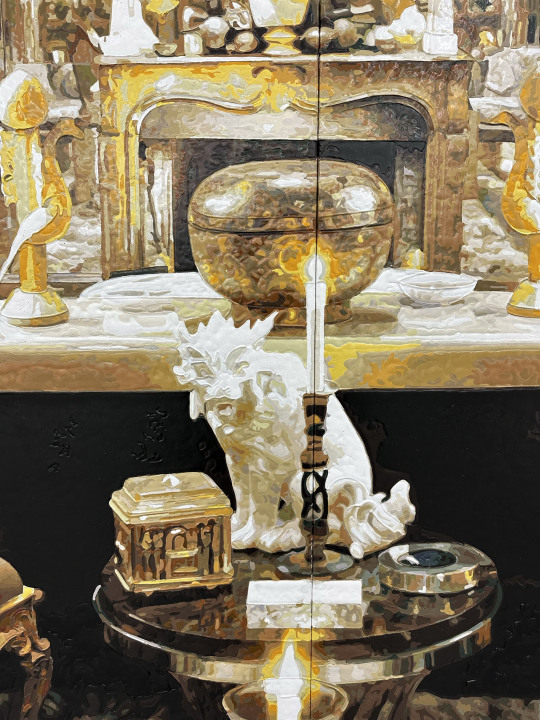
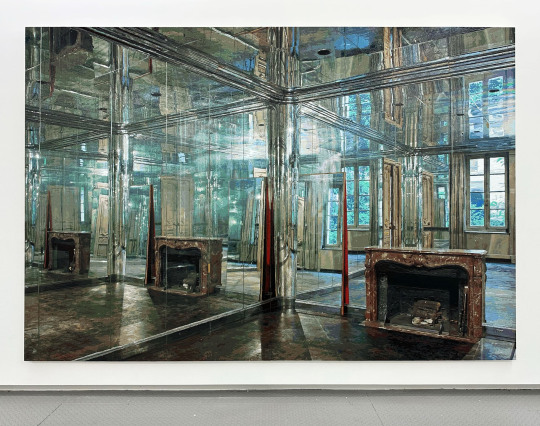
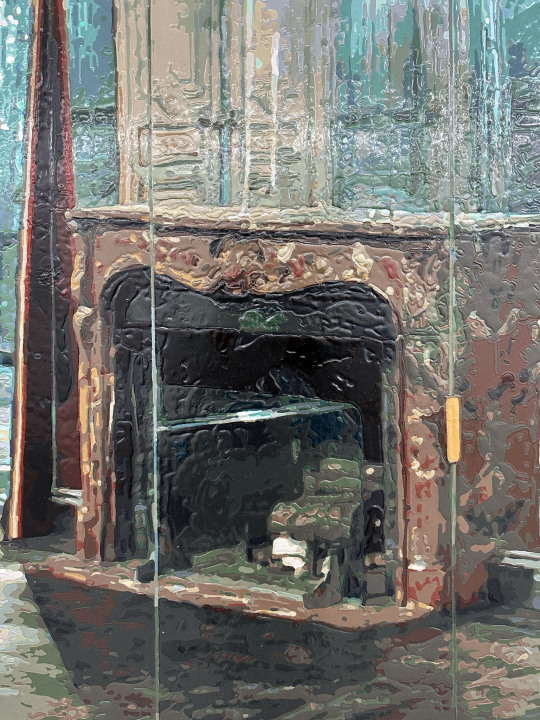


Currently at Arsenal Contemporary are Dorian FitzGerald’s paintings for his exhibition Fitzcarraldo. The images above are a few of the larger paintings from the show. The works initially look like photographs, but on closer inspection you can see more of the process involved in their creation.
Below is a section from the press release discussing FitzGerald’s work and the paintings pictured above. For more on the other works shown, including some of the smaller paintings, head to the gallery's website.
FitzGerald has spent the last two decades meticulously crafting a compelling, often monumental body of works, several of which have taken years to finish. His various lines of inquiry revolve around a central tenet: that the excesses, the follies, the deceptions and indulgences, the grand edifices, the opulence, the waste and plunder, the vanities, the subterfuges and the chummy pacts of the wealthy and the powerful, are all fodder for scrutiny. His subjects have ranged from the outdoor stage at the secretive Bohemian Grove during a production of Faust, a fake crown of costume jewelry made by the British to impress the King of Adra and help them facilitate their slave trade, to the staggering array of sunglasses collected by Elton John, to a vast aquarium stocked with black market fish. In this regard, FitzGerald has been compared to a contemporary court painter, albeit one who fully understands the paradox of using ostensibly beautiful works of art to deliver barbed comment on the very subjects he has so painstakingly rendered. FitzGerald’s large paintings are constructed with acrylic paint (and occasionally caulking) in a slow, precise method that the artist has refined in his studio over several years. The pre-process involves researching imagery, preparing it with custom software, making a large-scale acetate transfer onto canvas and then building up the paint slowly in a manner that resembles a kind of pointillism filtered through vector graphics. Both colour theory and the physical properties of paint, such as drying times and viscosity, are brought to bear in the setting of the final image. The infinite patience and granular attention to detail suggest a kinship with Tibetan sand painting. While the latter, once finished, is soon wiped away to drive home the impermanence of all things, FitzGerald’s works tend to hold a mirror up to that innately human wish to be exalted and remembered in the minds of others before the scythe comes down, as it inevitably does for queen, shepherd (and artist) alike.
Anchoring the exhibition is a pair of monumental paintings, both depicting a room in a Parisian apartment. Salon, Apartment of Valerian Rybar and Jean-François Daigre, Rue du Bac, Paris (2015) is the furnished version. Daigre and Rybar’s New York- and Paris-based firm Valerian Rybar & Daigre Design Corporation was renowned for providing the most lavish interior design and decorating for society doyennes from Miami Beach to Marakkesh in the 1970s and 1980s. It was closed following Rybar’s death in 1992. Their clients included Guy and Marie-Helene de Rothschild, Nicholas and Genevieve DuPont, Antenor and Beatriz Patino, Samuel and Mitzi Newhouse, Pierre and Sao Schlumberger, Sir James Goldsmith, Christina Onassis and Stavros Niarchos. They employed a host of artisans all over the world who did anything from paint Medieval tapestries on blank walls to create mother-of-pearl panels for a bathroom. They designed much of the furniture and rugs and were meticulous about the choice of fabrics, using opulent materials like satins trimmed with gold thread. The related painting, four years in the making, acts as a kind of coda. Salon, Rue de Bac, Paris (2022), depicts the same room after Rybar’s death, now an empty hall of mirrors en route to being dismantled. The searing band of red in the centre of the painting, glowing behind a door already off its hinges, is a peek into the molten bedroom that they had once kitted out like a Roman general’s tent.
Aquarium (Taboo) (2018), at 128” long and 40” high, was two years in the making. The painting shows a vibrant aquatic scene, with dazzling exotic fish and a mesmerizing array of coral. But the fish are black market, the coral has been pilfered, the 240-gallon tank is overcrowded with 53 specimens and the entire enterprise is kept alive by a complex system that is wholly unnatural and requires constant vigilance to prevent collapse. Of course, wild fish bound for the aquarium market must be caught alive and thus there exists an unsavoury network of divers who prowl the world’s reefs to find the most exotic and rare, often using cyanide spray to stun them (or inadvertently kill them if too much is used). The cyanide, when it settles on coral, soon kills that too.
This exhibition closes on 5/20/23.
#Dorian FitzGerald#arsenal contemporary nyc#arsenal contemporary#nyc art shows#art#painting#art show#lifestyles of the rich and famous#opulence#wealth#valerian rybar#daigre design#rybar and daigre design
2 notes
·
View notes